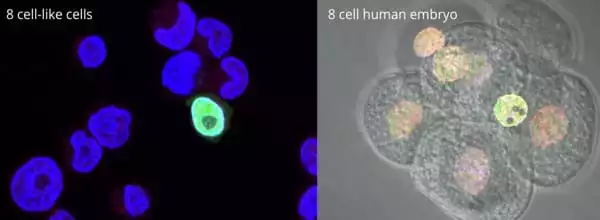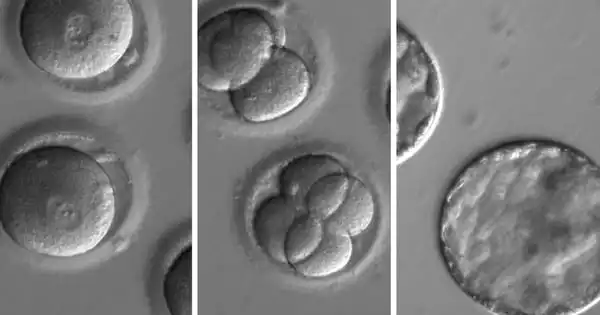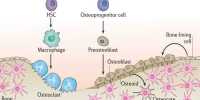Researchers have discovered a new type of stem cell that resembles cells in the early human embryo during the ‘genomic power transition’ from mother to embryo. The genome is reset and reorganized during this major developmental event, with many embryonic genes being expressed for the first time. If the procedure fails, further embryo development is halted, and there may be ramifications for later stages of development.
Without the use of human embryos, the newly discovered stem cells provide the closest model available for studying this process. This early embryo model will allow for a much more detailed study of human genome activation, providing crucial functional insights into genome regulation, developmental disorders, and early embryo loss.
The Babraham Institute’s latest work, published today in the journal Cell Stem Cell, describes a new subset of human embryonic stem cells that closely resemble the cells present at the genomic ‘wake up call’ of the 8-cell embryo stage in humans. This new stem cell model will enable researchers to map out the key genomic changes that occur during early development, allowing them to gain a better understanding of the implications of genome activation errors in developmental disorders and embryo loss.
Studying mouse embryonic stem cells has allowed researchers to learn about the general process of genome activation, but we could learn even more about this important step in human development thanks to our discovery of a human stem cell counterpart.
Dr. Jasmin
Just after fertilization, the early embryo in all mammals goes through a series of molecular events that set the stage for the rest of development. During this critical ‘wake up call,’ the embryonic genome takes over control of the cell’s activities from the maternal genome. This occurs in humans at the 8-cell stage and is known as zygotic genome activation (ZGA).
Prior to the findings of this study, researchers could only investigate the details of human ZGA in human embryos; existing human stem cell models only represented the embryo at later stages of development. Experiments involving embryos are permitted but strictly regulated in the United Kingdom, which means that research into early development has relied in part on alternative, non-human models.
In 2012, researchers discovered cells representing the genome activation stage of development in mouse embryonic stem cells (ESCs), allowing them to learn more about mammalian ZGA. Almost a decade later, the Institute’s Reik lab has discovered a human equivalent. The lab’s discovery paves the way for us to learn more about the early stages of preimplantation development.
“Studying mouse embryonic stem cells has allowed researchers to learn about the general process of genome activation, but we could learn even more about this important step in human development thanks to our discovery of a human stem cell counterpart,” said Dr Jasmin Taubenschmid-Stowers, lead author and Research Fellow in the Reik lab, part of the Institute’s Epigenetics research programme.

Cells take copies of the genome in the form of an RNA code, which is translated into proteins, in order to function. The transcriptome is the output of RNA code that can be used to identify different cell populations. Researchers used existing human data sets and information from mouse ESC studies to identify characteristic transcriptome marks that could be linked to genome activation in this study. They began their search for similar cells in their human ESC population using single cell techniques.
The researchers discovered a subset of human ESCs with the appropriate transcriptome marks to be a possible match for the 8-cell stage, when the major wave of genome activation occurs. They dubbed these cells ‘8-cell like cells,’ or 8CLCs, and used previously published human data to validate and confirm that these cells shared the same molecular outputs indicative of genome activation and could be used as a reliable model for future research.
The team collaborated with Professor Jennifer Nichols from the Wellcome — MRC Cambridge Stem Cell Institute to further investigate the extent of the similarities between their 8CLCs and the 8-cell stage in human embryos. They were able to select and search for proteins that were indicative of ZGA in both sets of cells. Their findings revealed that the ZGA-associated proteins found in 8CLCs were very similar to those found in human 8-cell embryos.
As Jasmin explains: “The collaboration with Professor Nichols and her team was critical because it allowed us to identify specific proteins and compare them to our new stem cell counterparts in real, fixed human 8-cell stage embryo cells. This study confirmed that our 8C-like cells matched at the protein level, in addition to the transcriptomics data, proving that the 8-cell-like cells matched embryo cells across multiple molecular layers.”
“Our focus is now on characterizing these cells and understanding their unique properties so that we can use 8-cell like cells as a tool to ask questions about the molecular changes that may cause developmental issues at this early stage.” Professor Wolf Reik, group leader at the Babraham Institute, stated this.















